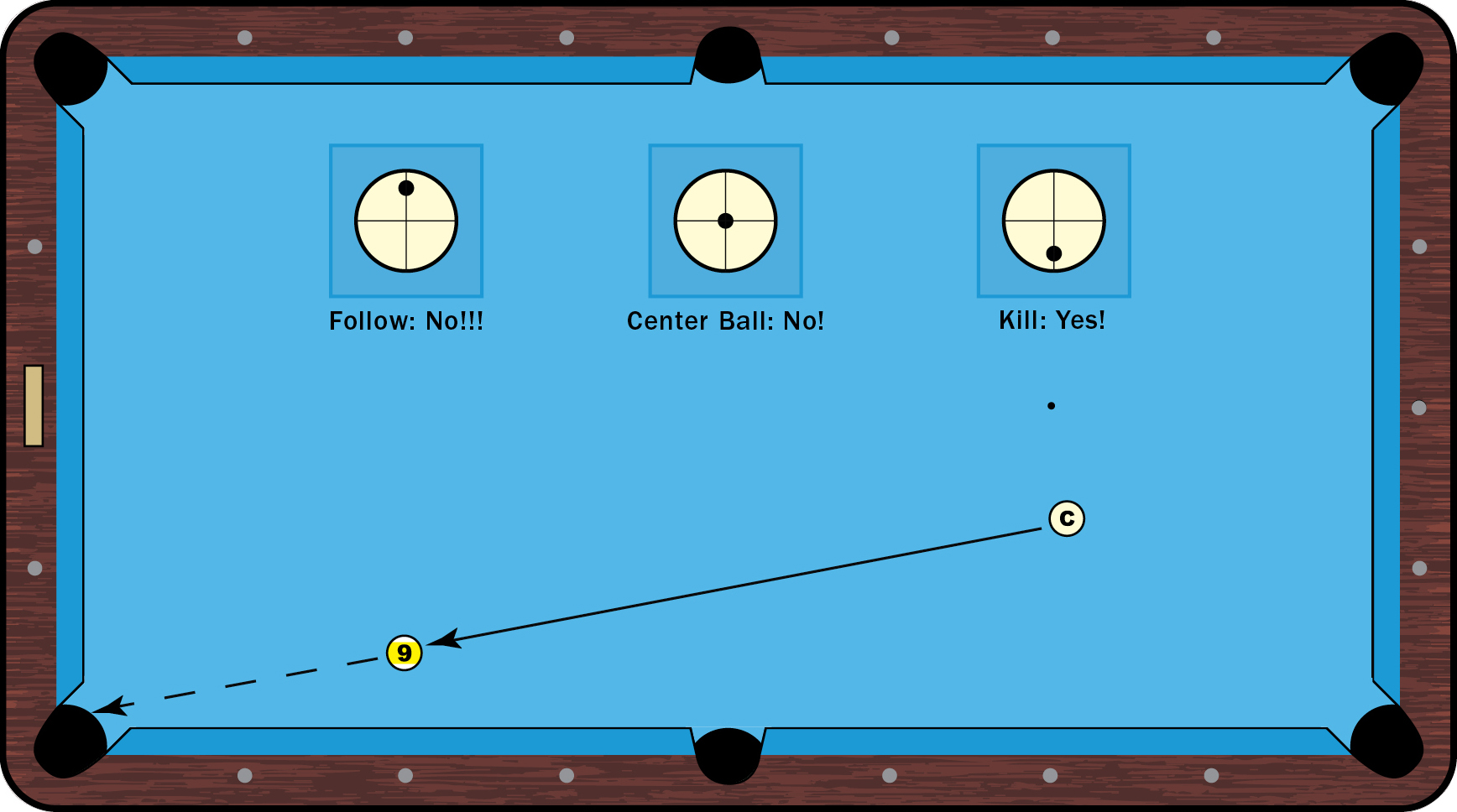Ball straight in? It still requires you to select the proper shot.
One thing about being on the road teaching the game: You quickly identify mistakes that are common amongst almost all amateur players, regardless of skill level. Shot selection is an area in which I see mistakes a lot, and I donít mean the choice of ball or angle. Often times itís simply the choice of how to strike the cue ball, even on straight-in shots.
Here is a relatively innocuous straight-in shot.
Meanwhile, Iíve seen amateur players ó and even myself when I was young ó play this shot the wrong way. And Iíve seen them play it the wrong way over and over, never realizing their mistake. Even playing it the wrong way, they can make the shot sometimes, but using the wrong shot selection will lead to more misses than successes.
Iíve set up the shot in the diagram, showing three different shot selections, and Iíll explain how each way of playing the shot differs and which is the best shot selection. (Spoiler alert: Donít ever play this shot with follow!)

Follow: The shot is straight in but there is quite a bit of distance between the cue ball and the object ball. That distance is what makes one shot better than the others. If there was only a foot or two between balls, all three shots would likely work. But when the shot is midrange or long range, itís vital to play it the correct way.
The biggest danger with using follow is that because the shot is straight in, you must play the shot pretty slow. That, of course, brings in a host of potential problems. For one, youíre putting all your trust in the table. Even if it rolls straight, it can still drift because of chalk on the cloth or dirt. Also, slow rolling a ball at midrange takes extra-steady nerves. And if you get too excited on the shot, you can scratch into the same pocket.
Center Ball: The most common way I see players play this shot is with center cue ball. It is an acceptable way to shoot the shot, but it makes the pocket a lot smaller. Why? Many amateurs take the shot this way because under pressure they prefer to shoot hard. Again, if the cue ball and object ball were closer together, the shot is pretty easy. But at distance, hitting the shot hard makes it easier to miss. Plenty can go wrong. You can hit the ball too hard; jump up on the shot; get nervous; grip the cue too tight; miss your aim point; etc. Missing key shots always starts with bad alignment, so if you donít stay down and you hit the ball too hard, thereís a good chance youíre going to miss.
Kill Shot: Most pros will play this shot with soft draw, also called ďkill.Ē The big benefit to playing the shot this way is control of the stroke. Of course, this takes practice but once you perfect this shot, youíll never shoot it any other way. Low on the cue ball and a medium stroke. Another benefit to this shot is that the cue ball canít roll off because itís sliding across the cloth instead of rolling. With the right speed, the pocket becomes much bigger on this shot. Execution is better on this shot as well because itís easier to stay down on the shot and not grip the butt so tight. If you get your pre-shot alignment right, keep your head still and put an easy stroke on the cue ball so that it bites just as it contacts the object ball, the pocket will look huge.
How do you perfect your speed to get the cue ball to bite on contact? Set up this shot but imagine itís a carom table (no pockets) and you want to get the object ball to rebound to the same spot it started from. That would be about the proper speed. Practice this shot over and over and you will find the proper speed for your stroke.





